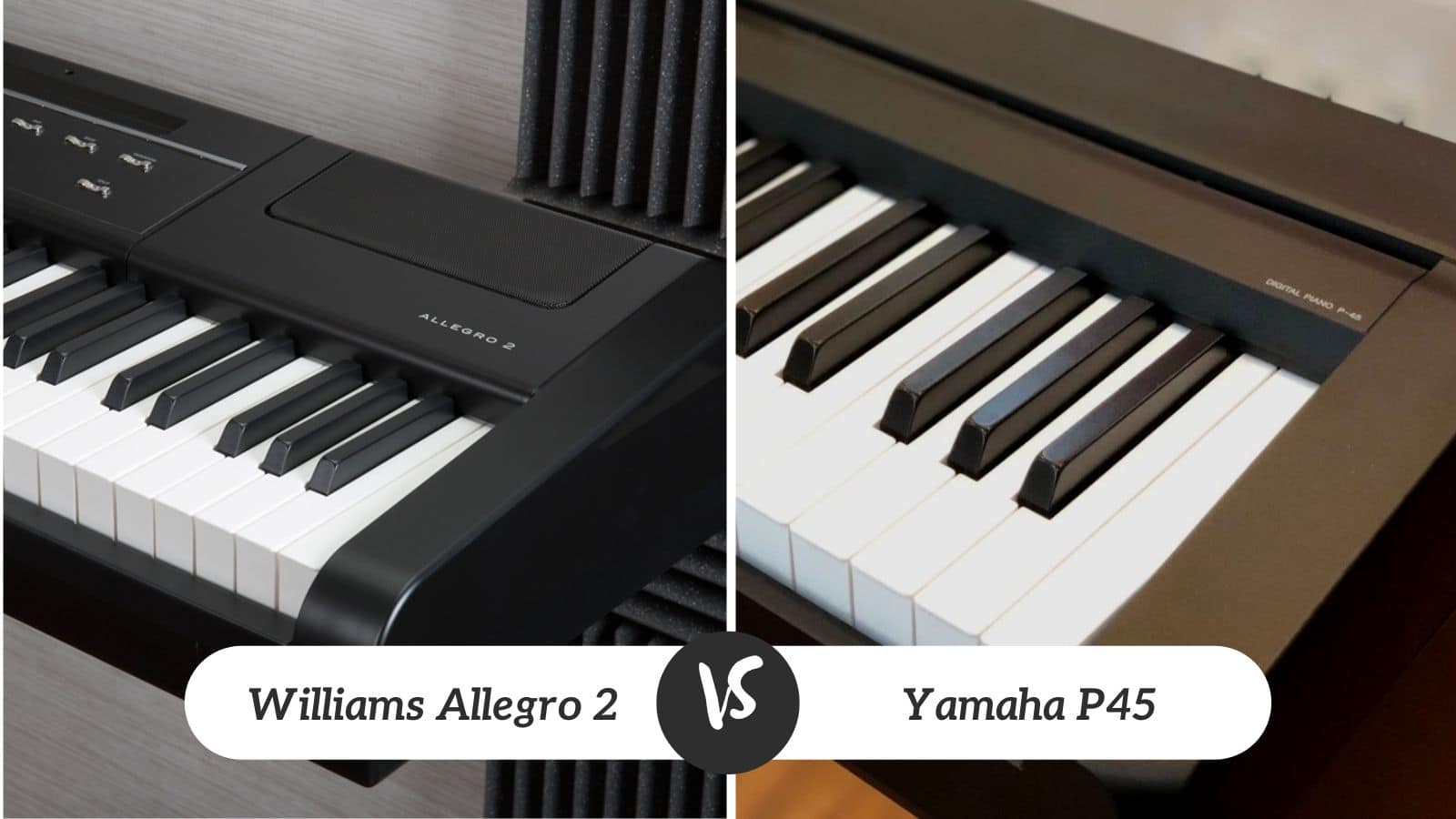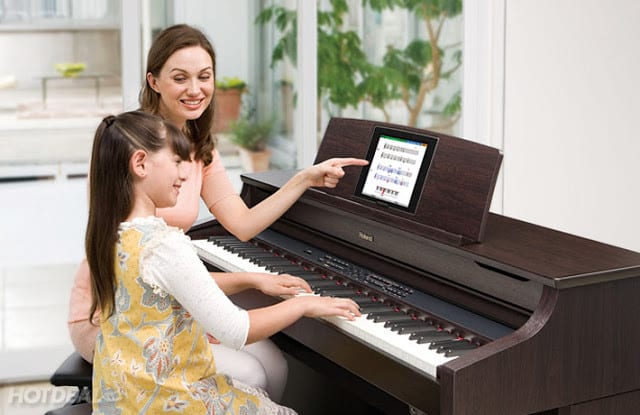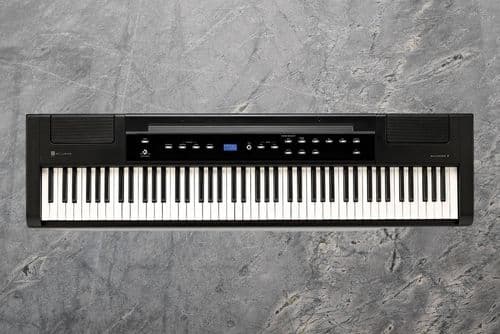
To better gauge the feelings that customers have regarding these two electronic keyboards, I have taken a survey from several current websites.
On ‘Review Finder’ the Yamaha P45 ranks amongst the top in the popularity poles coming in at 93%. On the other side of the challenge, the Williams Allegro 2 receives a somewhat unwelcome 56% score.
On the Piano World Forum, the feelings seem to be broadly in line with the previous findings.
The criticism levelled at the Williams Allegro 2 ranges from poor sound quality through to the extremely mechanical action on this keyboard.
For many customers, the Yamaha achieves a far greater level of success for its build quality, sound and action that the Williams Allegro does not live up to.
Both of these digital pianos are competitively priced at comfortably under the $500 price mark.
This places them towards the lower end of the scale of available keyboards that are aimed at beginner pianists/keyboard players.
As such they do not always have all the bells and whistles that an instrument at twice the price might have.
Let us take a closer look at both instruments so you are in a better position to make an informed choice.
Williams Allegro 2 vs Yamaha P45
The Yamaha-P45 has an impressive array of attributes and functionality. For a start, it has the full range, 88-note keyboard that is weighted.
This alongside the ‘graded hammer action’ essentially means it has a close feel and response to that of a ‘real’ piano.
The advantage is quite substantial when trying to establish a solid playing technique as a beginner or maintain one as a more experienced player.
There are also three levels of ‘touch sensitivity’ giving an additional layer of adjustment when considering the touch and feel of the keyboard.
In addition, the Yamaha-P45 offers excellent sample quality and 64-note polyphony. This in combination with the ample pair of 6W speakers brings a credible quantity of sound.
en instrumental sounds come with the Yamaha-P45 including two of each of the following: Grand Pianos, Electric Piano, Pipe Organs, Harpsichords plus Strings and Vibraphone.
The weight of the Yamaha-P45 is only 11.5kg, making it portable and the USB (type B) to host connection is standard with a headphone jack and sustain pedal option. This is an attractive if simple-looking digital piano with much to offer.
Interestingly, the Williams Allegro 2 digital piano is manufactured in China for ‘Guitar Centre’ that use the Williams Allegro as a brand name only.
Similarly, to the Yamaha-P45, the Williams is also made with a full keyboard of 88 keys. It is described as having ‘some’ weighted keys and ‘some’ touch sensitivity alongside a 64-note polyphony.
The range of instrumental sounds is also close to that of the Yamaha, but according to many accounts, the quality of the sounds is not impressive.
One significant criticism and difference between the Yamaha and the Williams is the apparently poor responsivity of the keyboard.
What this means in practice is that when you play the keys using different degrees of force, there is little volume change. This is not useful to the evolving pianist and deeply frustrating for the more seasoned musician.
If you are playing and practising on a relatively unresponsive keyboard it is almost impossible to learn the subtleties of pieces of music.
When and if you were then to transfer from the Williams Allegro 2 to an acoustic piano, you may have to learn your technique all over again.
It is worth noting that the lower-priced ‘Williams Legato’ is a spring action digital keyboard and really not comparable to a real piano in terms of action and response.
A further observation is that the Williams Allegro 2 is a noisy instrument. If you are playing the keyboard with more than moderate force, a fortissimo passage for example, then there is an audible knocking sound as the key hits the inside of the instrument.
This is not untypical for a less expensive digital piano but an issue that would not be nice to experience every time you played. Equally the tonal changes between registers on the Williams Allegro 2 are clumsy.
Instead of there being a gradual transition from one part of the range to another, it sounds more like there are several different pianos contained in the one piano.
It is a criticism as this is not the way an acoustic instrument behaves and so you are being tricked into playing in what is likely to be highly unmusical ways.
The additional sounds on the Williams Allegro 2 are palatable but not in the same league as the Yamaha-P45
On the plus side, the blue backlit control panel and one-touch buttons are user-friendly and include fairly intuitive editing functions.
In comparison to the Yamaha-P45, the speaker system is sufficient for most household uses. If you want to amplify the output further on the Williams Allegro 2, there is a quarter-inch jack that you can use to connect to additional speakers.
Ultimately, the Williams Allegro is a budget digital piano that offers a certain type of playing experience.
It is not as close an alternative to an acoustic piano to make is a recommendation from me, but if you just want a keyboard to have some fun on then it is certainly an option.
The Yamaha-P45 is a step up both in terms of the way the instrument performs and its sound quality. On this digital piano, you will come very close to the experience you have when you play and practice on a ‘real’ piano.
Even if the ‘action’ and ‘response’ is not high up on your list of priorities, the high-level sampling used in the available sounds would persuade me to find the extra money for this instrument.
Currently the Yamaha-P45 I have found for as little as $470.00 new. The Williams Allegro 2 presently is quite a lot less expensive at around $299.00.
This might make the decision for you, but there are many other viable alternatives available including the Casio range and don’t forget the second-hand market.


